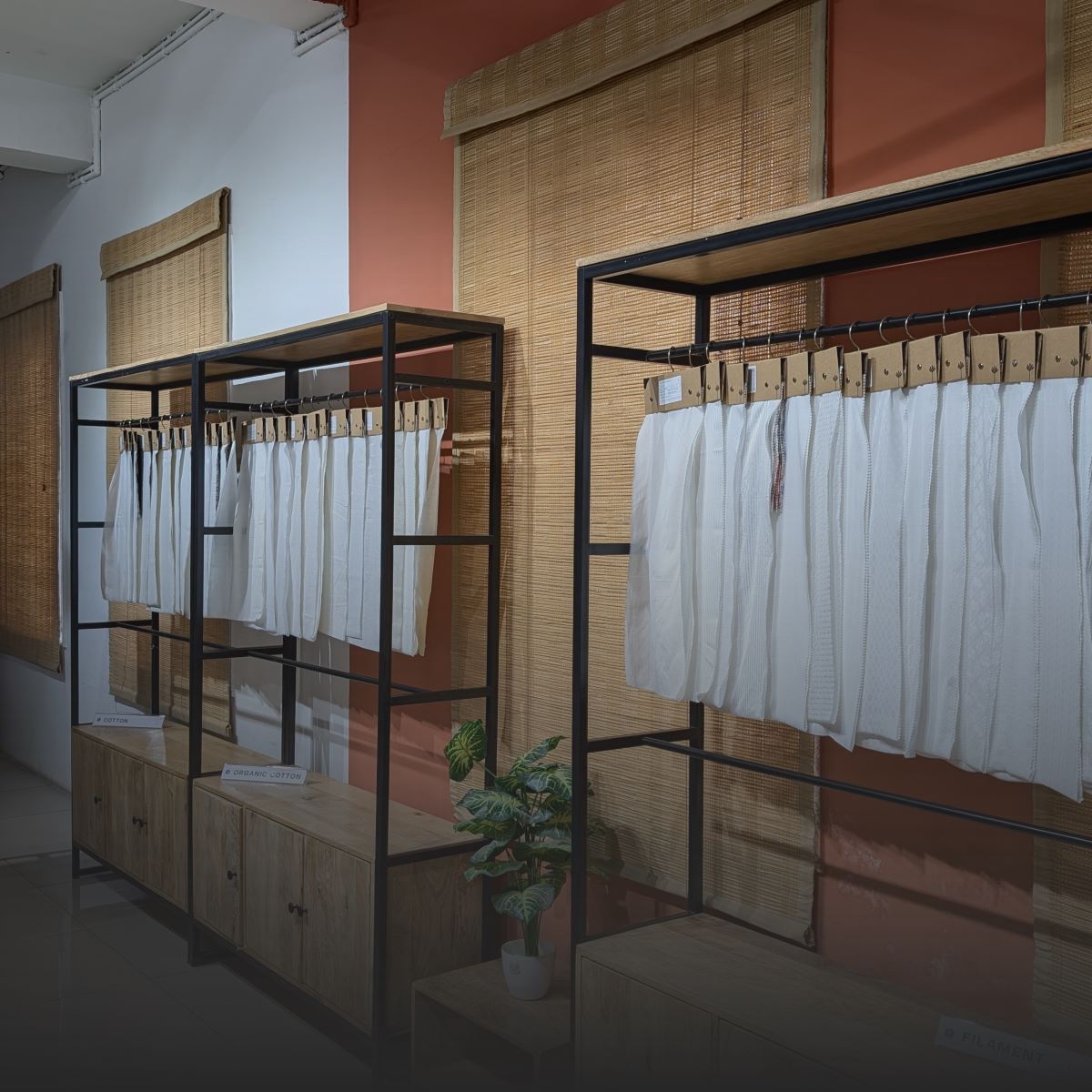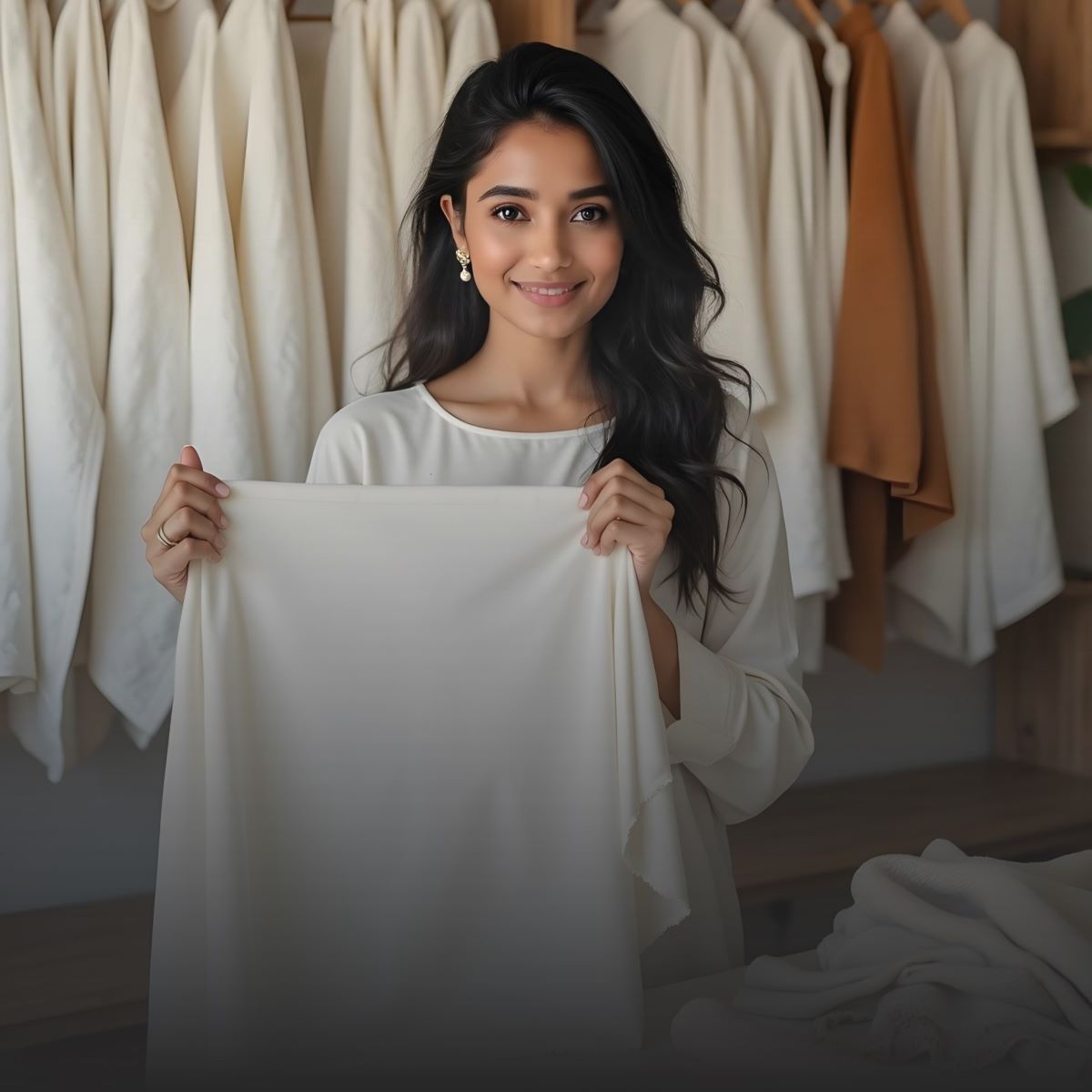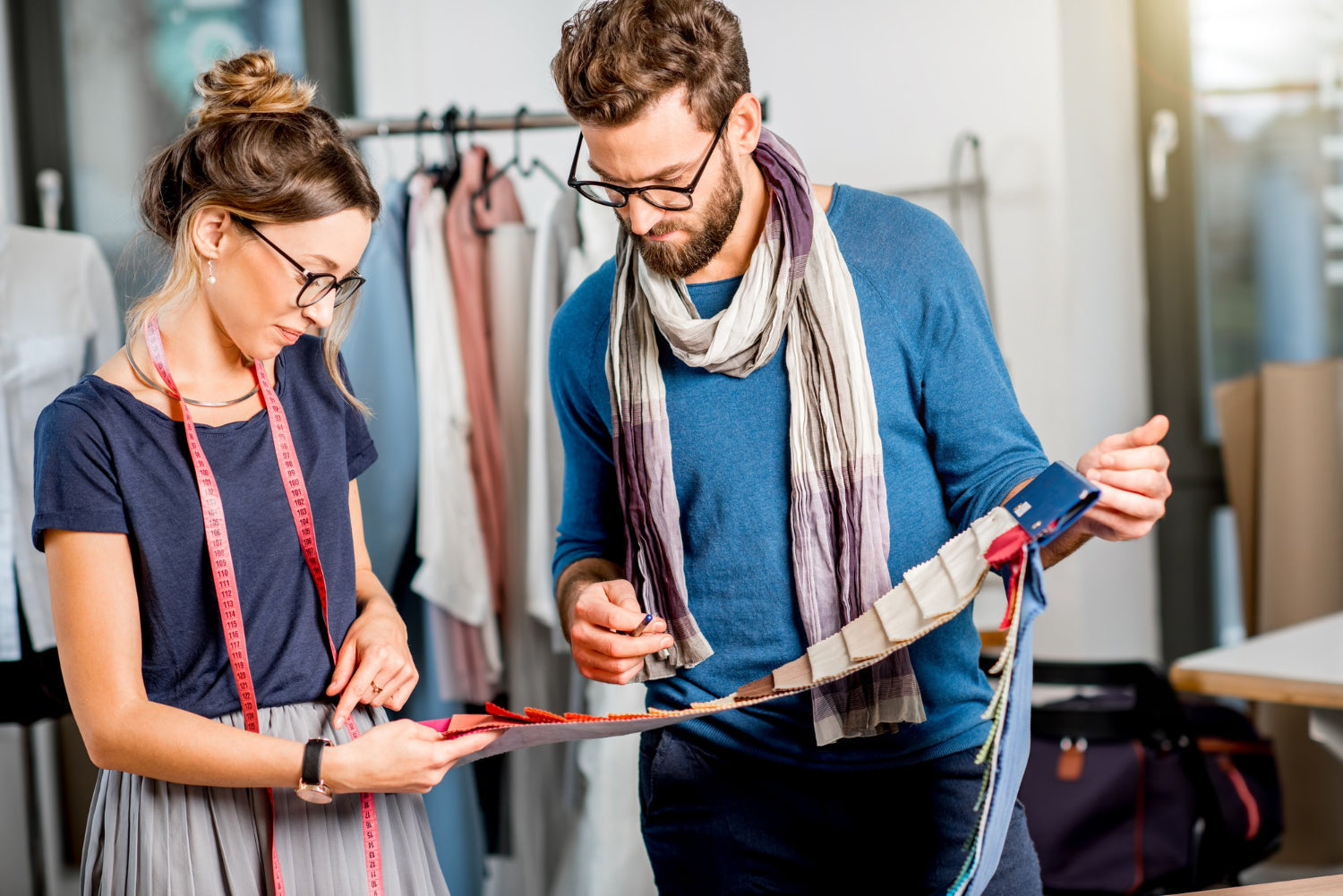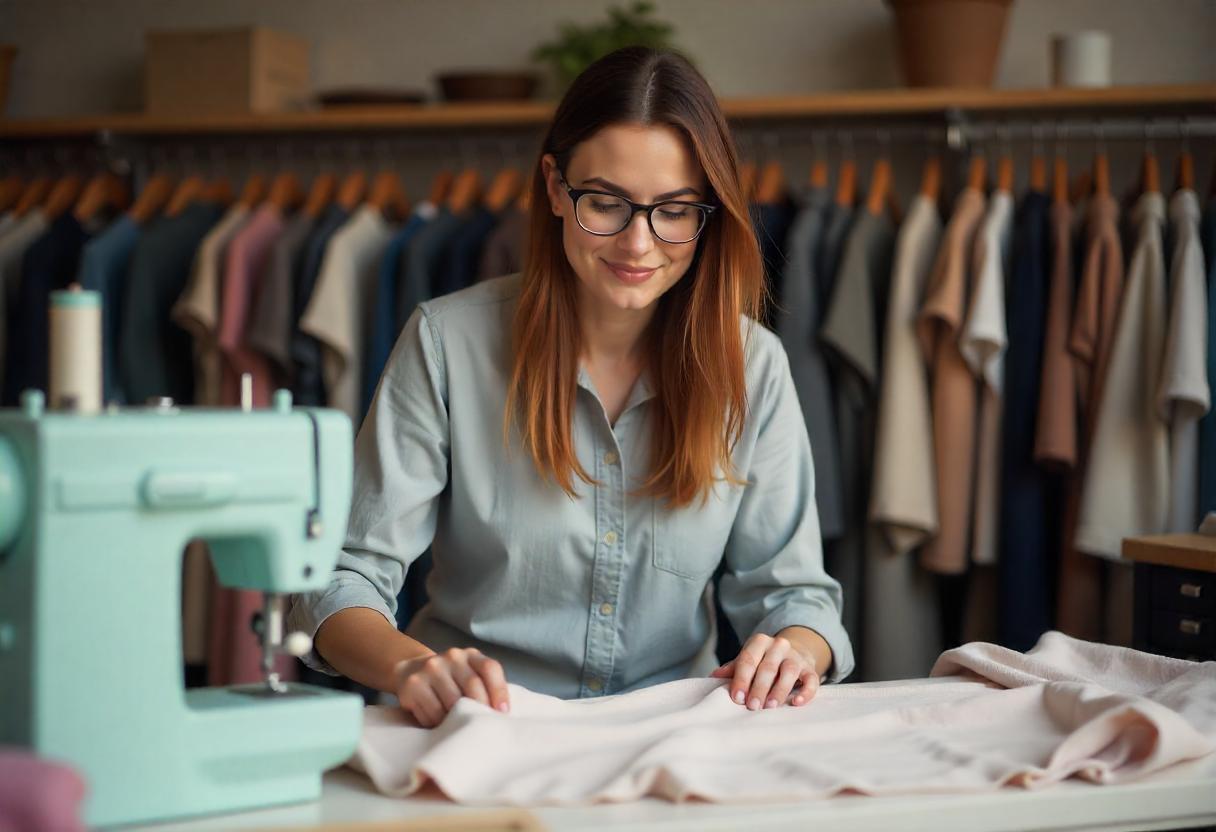When designing a new collection, the fabric you choose is very important. The right fabric makes your design look great, while the wrong one can ruin it. It's not about looks. It’s also about picking materials that fit your creative vision. Choose materials that offer the right texture, comfort and durability.
In this blog, we'll guide you through the process of finding the right fabric. We'll cover fabric types and important factors like cost and sustainability and help you choose the best design materials.
Types of Fabrics Fashion Designers Use

Choosing the right fabric is the first step to a great design. Different fabrics have unique looks, textures and strengths. Let's explore the most common fabrics used in fashion.
1. Natural Fabrics
Animals or plants are the source of natural fabrics. They are comfy, breathable and soft. Several popular examples are:
-
Cotton: Cotton fabric is so soft, breathable and comfortable and it is for casual wear, summer clothes and everyday outfits.
-
Linen: Linen fabric is also breathable and is a light fabric.
- Wool: Wool fabric is ideal for winter. Different types, like cashmere and merino, offer varying softness and warmth.
2. Synthetic Fabrics
Synthetic fabrics are man-made and designed to be strong, stretchy and affordable. They are commonly used in fashion, sportswear and active clothing.
-
Polyester fabric : Durable, wrinkle-free and easy to care for. Often mixed with natural fabrics to make clothes last longer.
-
Nylon: Light and strong. It is used in sportswear, jackets and swimwear because it dries fast and resists moisture.
- Acrylic: A soft and warm fabric like wool. It doesn’t shrink and is excellent for sweaters and winter clothes.
3. Blended Fabrics
Blended fabrics combine natural and synthetic fibers to achieve the best of both worlds, enhancing comfort, durability and ease of maintenance.
-
Cotton-Polyester Blend: Maintains cotton's softness while benefiting from polyester's wrinkle resistance and durability.
-
Linen-Viscose Blend: Offers the breathable, textured quality of linen with the added drape and softness of viscose.
-
Wool-Synthetic Blends: Enhances wool's warmth while making the fabric more lightweight and easier to maintain.
Blended fabrics help designers create comfortable, affordable, practical clothes that maintain a polished and refined appearance.
Factors to Consider When Sourcing Fabrics:

|
Factor |
Description |
|
1. Fabric Weight |
|
|
Light |
Suitable for flowy dresses and tops. |
|
Medium |
Ideal for everyday clothes. |
|
Heavy |
Best for jackets and winter clothes. |
|
2. Texture and Feel |
|
|
Soft |
It feels smooth and luxurious. |
|
Crisp |
Holds its shape well. |
|
Textured |
Adds depth and uniqueness. |
|
3. Sustainability |
|
|
Organic Cotton |
Grown without harmful chemicals. |
|
Bamboo Fabric |
Soft, breathable and eco-friendly. |
|
Tencel |
Made from wood pulp in an eco-friendly way. |
|
4. Cost and Budget |
|
|
Bulk Buying |
Buying in bulk gives you better deals. |
|
Fabric Alternatives |
Use cheaper fabrics that look similar. |
|
Direct Purchase |
Buy directly from manufacturers to save money. |
|
5. Durability |
|
|
Strong |
It should not tear easily. |
|
Resistant to Fading and Pilling |
It should resist fading and small fabric balls that form over time. |
|
6. Suitability for Your Design |
|
|
Structured Outfits |
Use wool or heavy cotton for structured outfits. |
|
Flowing Designs |
Use silk or chiffon for flowing designs. |
|
Daily Wear |
Use cotton or linen for comfort in daily wear. |
Read Also: Tips on Sourcing Fabric for your Clothing Brand
Where to Get Fabrics for Fashion Design:
|
Option |
What It Is |
Pros |
Cons |
|
Local Fabric Stores |
Shops where you can see and feel the fabric before buying. |
Get fabric right away. |
Limited choices of fabrics. |
|
Supports local businesses. |
Prices are usually higher than wholesale. |
||
|
Online Fabric Suppliers |
Websites that sell fabrics from different places. |
Huge variety of fabrics. |
Can't check quality before buying. |
|
Reasonable prices, especially for bulk orders. |
Shipping costs and delays can happen. |
||
|
Shop from anywhere. |
Fabric may not look the same as in photos. |
||
|
Fabric Manufacturers |
Buying fabric directly from makers, often in bulk. |
Best prices for bulk orders. |
Need to buy a lot of fabric. |
|
Some allow customization. |
Must build a good relationship with suppliers. |
||
|
Trade Shows and Fabric Fairs |
Events where you can see unique fabrics and meet suppliers. |
Discover new and unique fabrics. |
Travel and event costs. |
|
Great for networking and custom options. |
Some fabrics may not be available later. |
||
|
Wholesale Fabric Markets |
Markets where fabrics are sold in bulk at lower prices. |
Lower prices for buying in bulk. |
Must buy large amounts of fabric. |
|
There are many fabric choices in one place. |
Fabric quality can vary. |
Building Good Relationships with Fabric Suppliers:

A strong bond with fabric suppliers helps you get quality fabrics at good prices. Here are ways to build trust and foster effective collaboration with them.
1. Why Good Supplier Relationships Are Important
- It helps you save money with better prices and discounts.
- Ensures you always get good quality fabric.
- It makes ordering and communication easy.
2. Tips to Build Strong Supplier Relationships
Talk Clearly
- Clearly say what you need.
- Ask for samples before buying in bulk.
- Keep in touch to learn about new fabrics and discounts.
Be a Reliable Buyer
- Order on time and pay without delays.
- Don't change orders at the last minute.
- Always be professional and respectful.
Negotiate Smartly
- Ask for discounts when buying in bulk.
- Check prices from different suppliers before choosing.
- Agree on fair payment terms for both sides.
Visit Suppliers If Possible
- Meeting in person helps build trust.
- Checking fabric quality before buying avoids mistakes.
Stay Updated on New Fabrics
- Suppliers often introduce new fabrics; keeping in touch helps you get unique options.
- Attending trade shows or fabric fairs helps you find the best deals.
3. Benefits of a Good Supplier Relationship
- Better prices and priority access to new fabrics.
- Easy ordering and fewer sourcing problems.
- Trust and reliability, making fabric buying stress-free.
Building strong relationships with suppliers will help you get the best fabrics for your designs.
Tips for Sourcing Fabrics on a Budget

|
Tip |
Description |
|
1. Buy in Bulk |
Buying more fabric at once gives you discounts. You can also share bulk orders with other designers. |
|
2. Shop During Sales |
Fabric prices drop at the end of the season. Look for clearance or discount sales. |
|
3. Order Fabric Samples First |
Get small fabric samples before buying a lot to check quality and avoid wasting money. |
|
4. Look for Deadstock Fabrics |
Buy leftover fabrics from factories at lower prices. Local markets may have cheaper options, too. |
|
5. Compare Prices |
Check prices from different stores, both online and local, to find the best deal. |
|
6. Ask for Discounts |
If you buy fabric often, ask suppliers for discounts, especially on bulk orders. |
|
7. Reuse and Upcycle Fabrics |
Use leftover or old fabrics to create new designs instead of buying new ones. |
Sourcing Fabric for Specific Design Needs:

|
Tip |
Description |
|
1. Fabrics for Different Seasons |
|
|
Spring and Summer |
Light fabrics like cotton, linen and chiffon keep you cool in hot weather. |
|
Fall and Winter |
Warm fabrics like wool, velvet and fleece keep you cozy in cold weather. |
|
2. Fabrics for Special Outfits |
|
|
Bridal and Party Wear |
Elegant fabrics like silk, satin and lace are perfect for weddings and parties. |
|
Sports and Dance Costumes |
Stretchy fabrics like spandex and lycra help with movement and comfort. |
|
Casual Wear |
Soft fabrics like jersey, denim and rayon are great for everyday comfort. |
|
3. Custom Fabrics |
|
|
Unique Designs |
You can work with fabric makers to create special prints or designs. |
|
Brand Identity |
Custom fabrics help make your designs unique and reflect your brand. |
Five Easy tips for fabric sourcing
- Why Fashion Brands Need Technical Support in Fabric Sourcing?
- Guide to Sourcing Fabrics from India for US Fashion Brands
- Where Do Small, Medium and Large Businesses Source Their Fabric?
- Essential Checklist for Textile Buying Houses When Sourcing from India
- Where Do Fashion Designers Source Their Fabrics? And You Can Too!
Conclusion
Choosing the right fabric is essential for great designs. Designers should look at fabric weight, texture, strength and comfort to match their ideas. Finding suitable suppliers also matters. Local stores, online shops and wholesale markets offer different choices. Building good relationships with suppliers helps achieve better fabric quality and prices.
A balance between sustainability and cost is also important. Using ethical and environmentally favorable suppliers and eco-friendly fabrics benefits the environment and increases sales. Designing with different combinations and materials can create something unique. Designers may make fashionable, superior and eco-friendly clothing with the correct fabric selections.
FAQs
Where do fashion designers get their fabrics?
Fashion designers source fabrics from local fabric stores, online suppliers, wholesale markets, trade shows and textile manufacturers. High-end brands often work directly with mills to develop exclusive materials.
How do I find a good fabric supplier?
To find a reliable fabric supplier, research online marketplaces, visit trade fairs and compare wholesale vendors. Always check reviews, request fabric swatches and negotiate pricing before making bulk purchases.
What fabrics do high-end designers use?
Luxury fashion brands prefer silk, cashmere, fine wool, high-quality cotton and linen. Many also use eco-friendly fabrics like Tencel, organic cotton and recycled materials for sustainability.
Where does Gucci source its fabrics?
Gucci sources fabrics from Italy and other premium textile hubs. The brand is known for using high-quality silk, leather, wool and sustainable fabrics to maintain luxury and eco-friendly standards.
How do I source fabric for my clothing line?
Start by defining your fabric needs based on design, texture, durability and budget. Explore wholesale suppliers, online marketplaces and trade shows and request swatches to ensure quality before purchasing in bulk.
Can I buy fabric online?
Many designers buy fabrics from trusted online suppliers, wholesale fabric stores and manufacturer websites. Ordering swatches first is a smart way to check quality before placing large orders.
Where can I get fabric swatches for clothing?
You can request fabric swatches from wholesale suppliers, online stores and trade fairs. Some suppliers offer free samples, while others charge a small fee, helping designers choose the right material.
We also happen to be a magnet for suggestions, and would love to catch yours….throw us yours on hello@fabriclore.com




